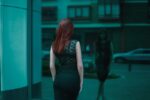The Art of Zoo Horse: Exploring the Controversial World of Bestiality in Art
-
Table of Contents
- The Art of Zoo Horse: Exploring the Controversial World of Bestiality in Art
- The History of “Art of Zoo Horse”
- The Impact of “Art of Zoo Horse”
- The Ethical Questions Raised
- Q&A
- 1. Is the “art of zoo horse” considered mainstream?
- 2. Are there any legal consequences for creating or consuming this art?
- 3. Can this art form be considered a form of animal abuse?
- 4. Is there any value in exploring taboo subjects through art?
- 5. What are the potential psychological effects on individuals who create or consume this art?
- Summary
Art has always been a medium for expressing human desires, emotions, and fantasies. Throughout history, artists have pushed boundaries and challenged societal norms through their work. One such controversial subject that has been explored in art is bestiality, specifically the relationship between humans and horses. In this article, we will delve into the world of “art of zoo horse,” examining its history, impact, and the ethical questions it raises.
The History of “Art of Zoo Horse”
The depiction of humans engaging in sexual acts with animals, including horses, can be traced back to ancient times. In ancient Greek and Roman art, there are numerous examples of bestiality depicted in sculptures, paintings, and pottery. These artworks often portrayed mythical creatures or gods engaging in sexual acts with animals, blurring the lines between human and animal desires.
During the Renaissance period, artists such as Leonardo da Vinci and Michelangelo explored the theme of bestiality in their works. Da Vinci’s famous painting, “Leda and the Swan,” depicts the Greek mythological story of Zeus transforming into a swan to seduce Leda, resulting in the birth of Helen of Troy. This painting, along with other similar works, showcased the fascination with the merging of human and animal desires.
Fast forward to the modern era, and the “art of zoo horse” has gained significant attention, particularly in underground art communities and online platforms. This genre of art often involves explicit and graphic depictions of humans engaging in sexual acts with horses. While it remains a niche interest, it has sparked debates and controversies surrounding the boundaries of art and the ethical treatment of animals.
The Impact of “Art of Zoo Horse”
The “art of zoo horse” has a profound impact on both the artists and the viewers. For artists, it serves as a means of self-expression and exploration of taboo desires. It allows them to challenge societal norms and push the boundaries of what is considered acceptable in art. Some argue that this form of art can be therapeutic for individuals struggling with their own desires or fantasies.
On the other hand, viewers of this art form may experience a range of emotions, from shock and disgust to fascination and intrigue. The explicit nature of the artwork can elicit strong reactions and spark discussions about the limits of artistic freedom and the moral implications of depicting bestiality.
Furthermore, the “art of zoo horse” has also found its way into the realm of online pornography. Websites dedicated to this genre of art have emerged, catering to individuals with specific fetishes and interests. This raises concerns about the exploitation of animals for sexual gratification and the potential harm it may cause to the animals involved.
The Ethical Questions Raised
The “art of zoo horse” raises several ethical questions that need to be addressed. Here are some of the key concerns:
- Consent: Animals cannot provide informed consent to engage in sexual acts with humans. This raises significant ethical concerns about the well-being and autonomy of the animals involved in the creation of this art.
- Animal Welfare: The explicit nature of the “art of zoo horse” often involves physically harmful acts towards animals. This raises questions about the ethical treatment and potential harm inflicted upon the animals for the sake of art.
- Normalizing Bestiality: Some argue that the creation and consumption of this art form may normalize bestiality and contribute to the desensitization of society towards animal abuse.
- Legal Implications: Bestiality is illegal in many countries due to the inherent cruelty involved. The creation and distribution of “art of zoo horse” may violate laws and regulations, leading to legal consequences for the artists and viewers.
Q&A
1. Is the “art of zoo horse” considered mainstream?
No, the “art of zoo horse” remains a niche interest within underground art communities and online platforms. It is not widely accepted or recognized in mainstream art circles.
2. Are there any legal consequences for creating or consuming this art?
Yes, the creation and distribution of “art of zoo horse” may violate laws and regulations related to bestiality and animal cruelty in many countries. Artists and viewers may face legal consequences if caught engaging in or promoting this art form.
3. Can this art form be considered a form of animal abuse?
Given the explicit and often physically harmful nature of the “art of zoo horse,” it raises concerns about the ethical treatment and potential harm inflicted upon the animals involved. Many argue that it can be considered a form of animal abuse.
4. Is there any value in exploring taboo subjects through art?
Exploring taboo subjects through art has long been a part of artistic expression. It allows for the examination of societal norms, challenging perspectives, and sparking important conversations. However, when it involves harm to animals or violates legal and ethical boundaries, the value becomes questionable.
5. What are the potential psychological effects on individuals who create or consume this art?
The psychological effects can vary greatly depending on the individual. Some may find it therapeutic for exploring their own desires or fantasies, while others may experience guilt, shame, or distress. It is essential to consider the potential impact on mental well-being when engaging with such explicit and controversial art forms.
Summary
The “art of zoo horse” is a controversial and niche genre that explores the taboo subject of bestiality in art. Throughout history, artists have depicted humans engaging in sexual acts with animals, blurring the lines between human and animal desires. The impact of this art form is profound, raising ethical questions about consent, animal welfare, and the normalization of bestiality. The explicit nature of the “art of zoo horse” has also led to concerns about the potential harm inflicted upon animals and the legal consequences for artists and viewers. While exploring taboo subjects through art can be valuable, it is crucial to consider the ethical implications and potential psychological effects on individuals involved in creating or consuming this art.




0 Comment